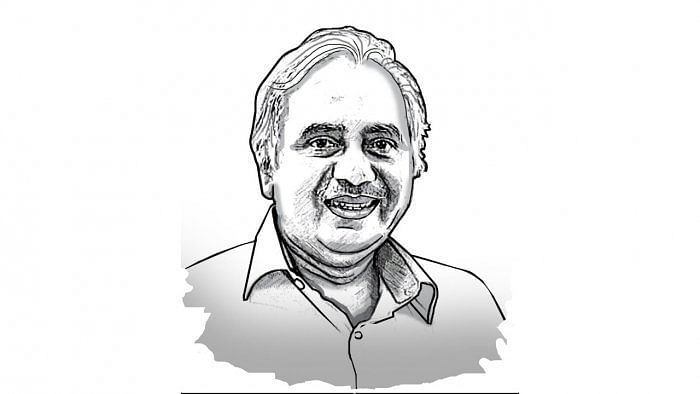
Seshadri Chari reads between the lines on big national and international developments from his vantage point in the BJP and the RSS. @seshadrichari
Credit: DH Illustration
A spokesperson of China’s Ministry of Foreign Affairs, Mao Ning, “noted” Prime Minister Narendra Modi’s comments on India-China relations and said that “sound and stable China-India relations serve the common interests of both sides.” His comments were in response to Modi’s comment calling for the two countries to “urgently address the prolonged situation on our borders” because “Stable and peaceful relations between India and China are important for not just our two countries but the entire region and the world.” The Chinese spokesperson’s response conveniently sought to downplay the border issue, saying, “the boundary question does not represent the entirety of China-India relations.” This while Beijing indulges in the shenanigan of giving Chinese names to nearly 30 places in Arunachal Pradesh in its continuing bid to claim the entire state as part of its territory.
China has eyed Arunachal Pradesh ever since Chairman Mao made his infamous assertion that Tibet was the right palm of China, and Ladakh, Nepal, Sikkim, Bhutan and the North-East Frontier Agency (NEFA), including Arunachal Pradesh, its five fingers. Killing thousands of Tibetans, Mao’s Communist China annexed Tibet, giving credence to his agenda of ‘reclaiming the Middle Kingdom.’ Xi Jinping, who has broken with China’s Deng Xiaoping line of leaders and returned to a Maoist idea of China, wants to ‘rejuvenate’ the country by regaining territories that it lost due to imperial intervention since 1840.
After taking over Tibet, during a mass meeting in Lhasa in July 1959, Chinese Lt-Gen Zhang Guohua had said: “The Bhutanese, Sikkimese and Ladakhis form a united family in Tibet. They have always been subject to Tibet and to the great motherland of China. They must once again be united and taught the Communist doctrine.” Alarmed, Bhutan closed its border with China and shut off all trade and diplomatic contacts with Beijing (then Peking). It also established formal defence arrangements with India.
It was the annexation of Tibet and Xinjiang province that brought China to the borders of India, Nepal, Bhutan, Afghanistan, Tajikistan, Kyrgyzstan, Kazakhstan, Russia, and Mongolia. Besides being China’s largest political unit in area, Xinjiang has linked China back to the ancient Silk Route, becoming a gateway for Xi Jinping’s signature project, the Belt and Road Initiative (BRI), and given China ownership over Kashgar, the junction of the Southern Xinjiang Railway Project, which is the gateway to Afghanistan, Iran, Central Asia and the China-Pakistan Economic Corridor (CPEC) ending at Gwadar in the Indian Ocean.
The Doklam stand-off precipitated by the People’s Liberation Army at the trijunction of India-Bhutan-China in 2017 was a clear indication of Xi’s idea of ‘rejuvenation’. Some have suggested that we fight China’s bid to name-and-claim our territory by renaming Chinese towns with Indian names. That would be a juvenile reaction, to say the least, and a naïve way of dealing with China’s long-term strategy.
Delhi should revisit its ‘One China’ policy on Taiwan as well as step up support for the Free Tibet movement. We must declare Xinjiang a ‘disputed territory’ and demand that its majority Uighur population be allowed to determine its status free of Beijing’s coercion and oppression.
The West, meanwhile, should wash off the China gleam in its eyes, which continues to persist despite the heightening fear of China’s aggressive turn, shed its double standards, and wake up to the realities of regional geopolitical dynamics. It is, after all, already reaping what it sowed in building up the Chinese economy. Does it want to burn its fingers anymore?
The key to dealing with China’s revanchism and hegemonic ambitions is to put a brake on its economy. The West’s mindless outsourcing of all manufacturing to China for decades allowed the latter to become the world’s second-largest economy. Now, the West must put the genie back in the bottle. Irrespective of who wins the US presidential elections in November, Washington will have to further tighten the economic screws on Beijing. Europe, too, will have to do the same and step back from the unsustainable trade relations the countries of the European Union have developed with Beijing. European car-makers, for instance, will have to redraw their strategies and supply chains if they are to protect their industry, especially in the face of China’s aggression in the electric vehicle markets.
It is in these realities that India and the West must seek opportunities to together meet the China challenge. On the one hand, New Delhi will have to strengthen its own defence industrial capabilities and keep China at bay on its own. On the other, it has to step up the effort to pull western capital, technology and manufacturing to its soil.